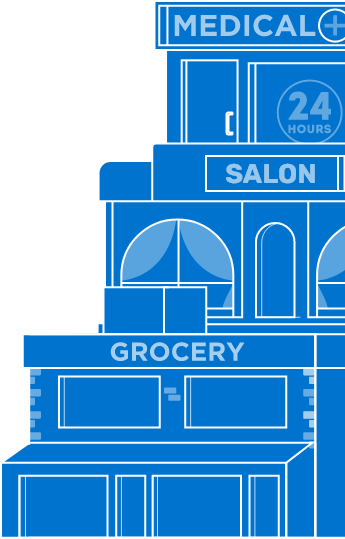Published On Aug 15, 2015
in Areas of Expertise
Increased lending opportunities and limited inventory have led to stiff competition for retail acquisitions in the top 25 U.S. markets. Cap rates are the lowest we’ve seen in years and interest rates remain down, while rents continue to grow.
Amid the high competition, we have been an active REIT buyer. We acquired 77 assets last year for $1.2 billion, and we were named the fastest growing acquirer in 2014. Through July of this year, we have acquired 27 centers, bringing our property total to more than 270. We aim to buy another 35 to 40 centers by year-end.
Our approach in this environment is to buy what we call “A” properties in “B” markets. “A” properties are anchored by grocers that hold the No. 1 or 2 positions in their area and are generating sales above the market average. These properties also deliver goods within the last three miles of consumers’ homes, because this proximity creates a stronger customer loyalty to tenants.
“B” markets are generally secondary markets. We have been able to buy 100 to 150 basis points better on yield in markets such as Alpharetta, GA or Folsom, CA than primary markets like Atlanta, GA or Sacramento, CA. We’re also seeing equally strong or stronger growth in rental rates in these secondary markets compared to the primary markets. This is evident when considering our renewal rent growth in these markets over the last 12 months.
We look at core, core-plus, and value-add properties. When a quality grocer anchors a value-add opportunity, competition can be just as high as when buying core and core-plus centers. Core real estate includes high-quality, well-leased properties, while core-plus assets need some improvement to boost values. Value-add properties are higher risk and need more extensive improvements, but they can create higher returns than core and core-plus assets.
Cureton Town Center in Waxhaw, NC, Central Valley Marketplace in Ceres, CA, Harvest Plaza in Akron, OH, and Commonwealth Square in Folsom, CA and are all prime examples of “A” properties in “B” markets in our portfolio.
We expect to continue to be able to make favorable acquisitions over the next 12-18 months. Many are predicting that interest rates will rise, and we believe that it will be a gradual increase. The borrowing market has been hot for the past two years and we anticipate continued availability of capital. Retailer health is strong.
We will continue to be aggressive in building our acquisition pipeline without deviating from our goal to deliver stable and consistent returns to our investors. A disciplined focus on our core competency of grocery-anchored shopping centers, as well as deep local market knowledge, are crucial to generating the results our investors seek during any real estate cycle.
Forward-looking Statements
This release contains forward-looking statements about our business, including, in particular, statements about our plans, strategies and objectives. You can generally identify forward-looking statements by our use of forward-looking terminology such as “may,” “will,” “expect,” “intend,” “anticipate,” “estimate,” “believe,” “continue” or other similar words. You should not rely on these forward-looking statements because the matters they describe are subject to the factors detailed under Risk Factors in our most recent Form 10-K and subsequent Form 10-Qs on file with the Securities and Exchange Commission as well as other known and unknown risks, uncertainties and other unpredictable factors, many of which are beyond our control. Our actual results, performance and achievements may be materially different from that expressed or implied by these forward-looking statements.
Bob Myers





